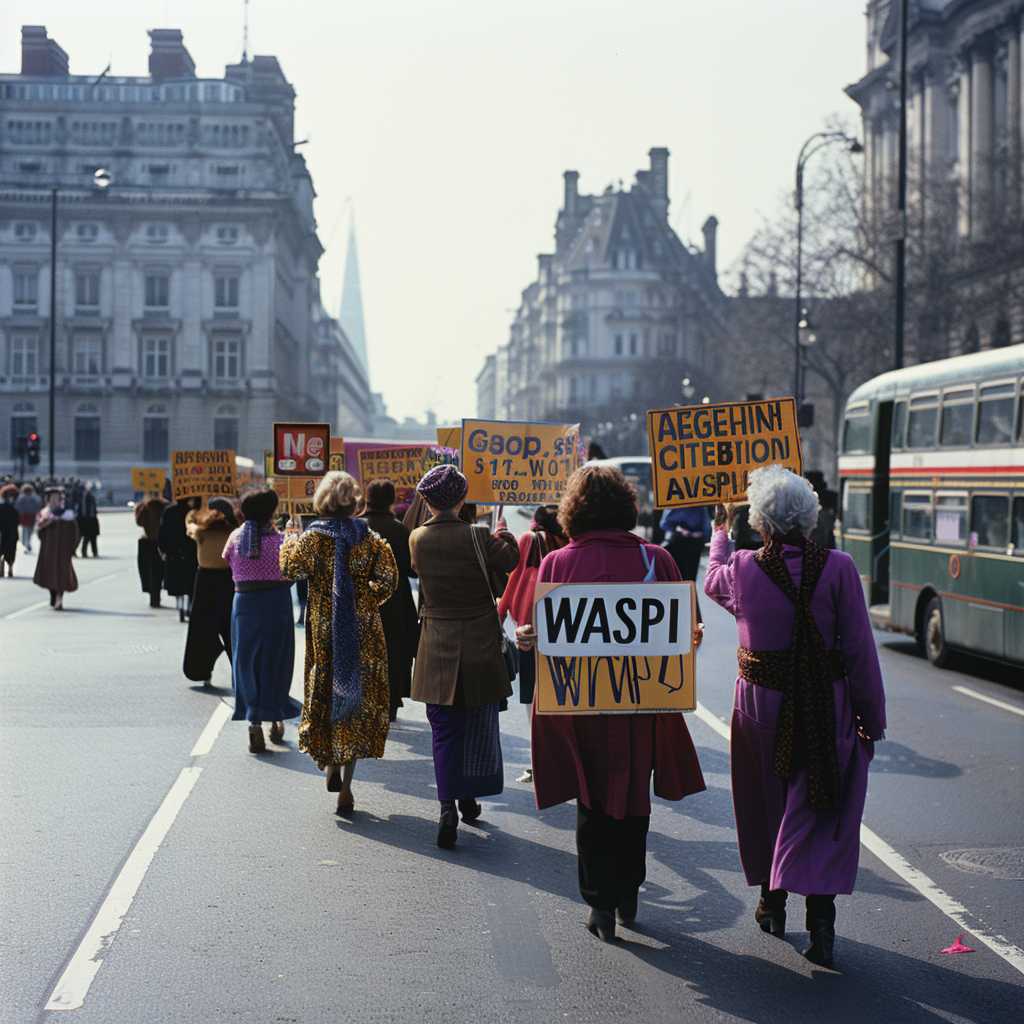The Plight of the WASPI Women: Understanding the Campaign for Fair State Pension Adjustments
Waspi, or the “Women Against State Pension Inequality,” is a significant grassroots campaign movement originating in the United Kingdom. It emerged in response to the changes regarding the state pension age for women born in the 1950s, as laid out by successive UK governments. This article seeks to explore the chronology of the WASPI movement, its motivations, the government’s perspective, public reception, and impacts on affected women.
A Timeline of State Pension Reforms and the Rise of WASPI Movement
The genesis of the WASPI movement can be traced back to changes in state pension laws beginning from 1995. The original State Pension Act of that year initiated a gradual increase in the pension age for women from 60 to match that of men at 65. The intention was to equalize retirement age between genders. This progressive change was intended to be implemented over a ten-year period from 2010 to 2020. However, subsequent amendments, particularly the 2011 Pension Act, accelerated this timeline, causing abrupt changes for many women, with some learning they would need to wait an additional eighteen months to several years beyond their expected retirement age before receiving their pensions.
The inconsistencies and perceived lack of adequate notice led to growing discontent among affected women who felt unfairly targeted by these regulations. The situation precipitated into a collective outcry and the formation of campaign groups like WASPI. This organization contends that while they are not opposed to equalization per se, they argue that insufficient time was given for those affected to make suitable financial preparations for their later years.
Objectives and Activities of WASPI
WASPI has centered its focus not only on raising awareness about the disadvantage imposed by abrupt pension age changes but also on advocating for fair transitional arrangements. Their key demand is for the UK government to provide a ‘bridge’ pension to cover the gap from age 60 until their new delayed state pension age. Additionally, they seek compensation for losses incurred.
To further these aims, WASPI has mobilized through various avenues—organizing demonstrations, lobbying parliamentarians, engaging with media outlets, and facilitating discussions throughout national and regional platforms. Their campaign efforts have achieved extensive reach and drawn substantial public and political attention.
Government Position and Legislative Responses
Successive UK governments have largely maintained that adjusting the state pension age is necessary for sustainable public finances, especially given increasing life expectancy rates and demographic changes. They emphasize that equalizing male and female retirement ages is also a question of eliminating gender discrimination in state pension provision.
Legislative bodies have conducted multiple inquiries into the state pension age amendments and their implications with various outcomes. While there has been some empathetic understanding towards these women’s plight, it has yet resulted in significant policy reversals or specific measures to address WASPI’s concerns fully.
Social and Economic Impact
The lack of preparedness instilled by rapid pension adjustments has affected numerous women, touching on issues such as financial instability and hardship, mental health issues, and questions about intergenerational fairness. Formerly self-sufficient individuals find themselves in situations requiring welfare support or enduring tax implications that were not anticipated. The societal impact transcends individual stories; it underscores critical discussions about how structural changes in policy impact long-term social contracts with citizens.
Public Perception and Solidarity
Public opinion on the WASPI movement is somewhat variegated; however, there exists a substantial degree of solidarity too. Supporters point towards issues of justice and equality for why transitional arrangements should be fair. Critics underline broader financial or pragmatic considerations to buttress government policies.

